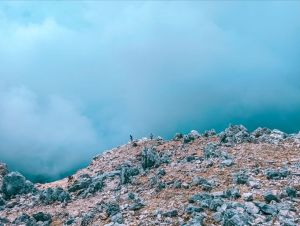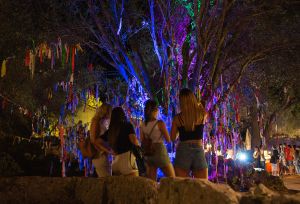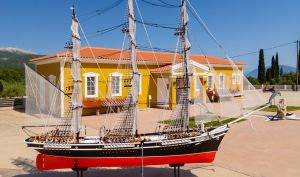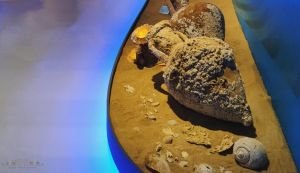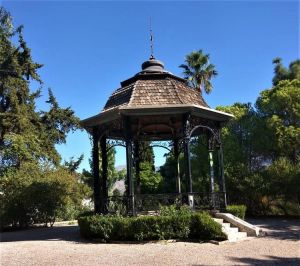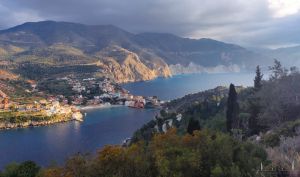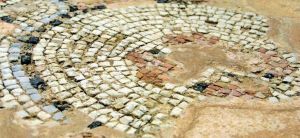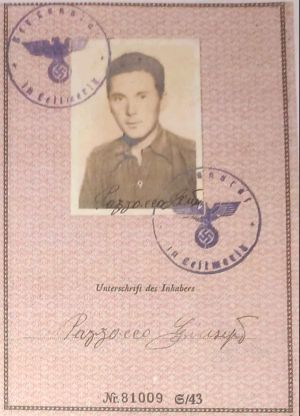Displaying items by tag: history of kefalonia
THE TERRIBLE DRAGON OF MOUNT AINOS
In July 1633 a strange story, almost a fairy tale, was recorded in an official document of the municipal register of Kefalonia. The Venetian governor Fantino Malipiero declared that the inhabitants of the island were terrorized by a man- and sheep-eating dragon and issued an order to kill the terrible beast. As many had already failed in the difficult task, a reward was offered: anyone brave enough to slay the dragon would be rewarded with a large part of the forest at the foot of Mount Ainos.
THE BREATH OF THE GIANT
A fearsome giant is buried under the blue waters of the Mediterranean Sea. His name is Enceladus, he has long dark hair and a thick beard, proud eyes and a rebellious spirit. According to the myth, Enceladus was at the head of the Titans who dared to challenge the gods of Olympus. What does it have to do with Kefalonia? Well, it seems that he is responsible for the earthquakes that occasionally shake the island.
THE NAUTICAL MUSEUM OF SAMI
Imagine a child fascinated by the mysteries of the sea. Imagine him building a boat with wood and sacks of flour as a sail and, at the age of nine, setting sail for Ithaca. No, this is not the story of a small adventurer fished (fortunately) in the channel between Ithaca and Kefalonia by a fisherman, but of a great lover of the sea who, once he grew up, even decided to open a museum to bear witness to the great story boating of his native country, Sami.
THE ARCHAEOLOGICAL COLLECTION OF SAMI
The Archaeological Museum of Sami is a must-see for anyone who wants to know Kefalonia beyond its beaches and most famous tourist attractions. The museum, inaugurated in 2021, hosts a very interesting exhibition of finds collected in the area of Sami and Fiskardo. On the outside of the building, the colorful mosaics that decorated villas, spas and public buildings in the cities are displayed, while inside, the collection is divided into 4 rooms that develop different thematic units. Visit it and tell us which find struck you the most: the interesting pieces are really very many but we particularly liked the jewels, a doll which at the time of its use had movable arms and legs and a small terracotta vase which was probably used both to fill oil lamps and as a feeding bottle, the ancestor of our baby bottle.
THE MYCENAEAN TOMBS OF KEFALONIA
The Mycenaean civilization flourished in Greece during the Late Bronze Age (1600-1100 BC). Sailors, shepherds and skilled warriors, in their travels the Mycenaeans brought with them their language and their customs, such as for example that of burying the deceased in large mounds containing well tombs. Tholos tombs were large circular rooms with a high vaulted roof and a straight entrance passageway lined with stone and were usually decorated with gold, silver and bronze. The deceased was often buried with daggers, gilded masks, diadems, armour and bejewelled weapons. These burial chambers are also mentioned in Homer's Iliad and Odyssey!
THE NAPIER PARK, A GARDEN IN THE HEART OF ARGOSTOLI
Right in the center of Argostoli there is a large iron gate that seems to lead to a secret garden. Little Napier Park sits on a rise just above the town's main square. Surrounded by stone walls in the local style, thanks to its secular trees the park offers a particularly pleasant shaded refuge during the summer heat.
CASTLES OF KEFALONIA
The promenade that climbs towards the castle of Assos, on the central western coast of the island, is one of the most famous photographic points of Kefalonia. The view over one of the most beautiful villages of Kefalonia is spectacular at any time of day but it is at sunset that the houses of the village turn golden and the cliffs around the village really seem to shine. The castle of Saint George, located in the southwest of the island, is of equal beauty. From the old walls of the fortress, in fact, you can enjoy an unlimited view of the plain of Argostoli.
ROMAN KEFALONIA, THE ARCHEOLOGICAL SITES OF FISKARDO AND SKALA
For us Italians, lucky inhabitants of a country rich in historical finds unique in the world and incredible architectural beauties, the discovery of Roman settlements during an excavation activity does not represent a rare and particularly significant event. Should you therefore visit the Fiskardo cemetery and the Roman villa of Skala during your holidays in Kefalonia? Absolutely yes! Coming across Roman finds abroad, in addition to demonstrating that we are not the first "Italians" to have fallen in love with this enchanting island, reminds us how intertwined the history of Mediterranean countries is and how much these contacts have enriched all the civilizations involved... And if you're traveling with little explorers, this break from the beach is sure to be a great adventure for them!
DIVISIONE ACQUI, A SHARED MEMORY
In the face of a tragedy, the evidences of those who have personally experienced pain or have lived it through the painful stories of their loved ones strike us much more than historical facts.
As human beings, it is impossible not to feel empathy for those who have suffered injustices and abuses or who have sacrificed their own lives for the cause they believed in. Thus, even in the darkest moments, relationships are established and ties are tightened, one's ethics is allowed to prevail over ideologies and fear, glimmers of light and hope can be glimpsed.
In commemorating the Acqui Division, the human closeness shown by the people of Kefalonia should be remembered as much as the sad story of the Italian soldiers. There are endless tales of the islanders who hid, protected, fed the Italian soldiers at the risk of their own lives. Equally numerous are the painful stories of those who have lost family members due to the reprisals of the Germans. Despite the war and the invading role of the Italians, the militaries of the Acqui Division are not remembered with anger and contempt, but with the smile that is dedicated to young people far from their country, more men than soldiers, capable of acts of kindness and to make themselves loved.

